UPDATE: Since this article was originally posted, our dwarf banana tree has gotten approximately 3 feet/1 metre tall. Scroll to the bottom to see a more current image of it.
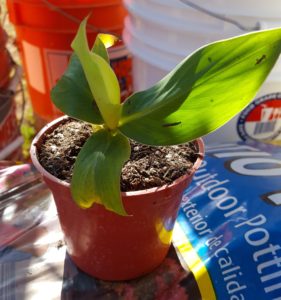 Recently, I wrote about the recent developments in Venezuela and its current food shortage crisis. In response to the growing demand for information about growing food using our self-watering container methods, I also added a survey to the Learn & Grow website for a few days asking our visitors from Venezuela to tell us about their challenges with growing their own food.
Recently, I wrote about the recent developments in Venezuela and its current food shortage crisis. In response to the growing demand for information about growing food using our self-watering container methods, I also added a survey to the Learn & Grow website for a few days asking our visitors from Venezuela to tell us about their challenges with growing their own food.
The feedback we received was powerful. In addition to technical questions about self-watering containers and concerns over access to materials, we also got a lot of questions about how to grow specific types of plants, which is what prompted today’s article. Somebody wanted to know about growing bananas.
It had never occurred to me to find out if one could grow bananas in the type of containers we use, so I went on a quest and found that there are edible dwarf banana plants that can be grown in fairly large pots on patios. They need adequate draining so their roots don’t rot, potassium rich soil that leans to the acidic side, but not too acidic, and lots of hot sun, so they are best suited for tropical and subtropical climates.
I’m located in Southern California. The neighbors have a banana tree that is slowly taking down the fence between our houses because it grows so prolifically. Clearly, bananas like our climate.
My concern was the amount of root space a banana tree, even a dwarf variety, might need. I figured, there’s only one way to find out, so Operation Dwarf Banana was officially launched. I found a dwarf banana variety for $5.99 on Amazon.com and it was shipped to me in days.
I went shopping and got a bag of small lava rocks to mix into the potting soil so there would be sufficient drainage, as well as the materials to build out a new self-watering container. There is no room in any of the other containers in our test garden, and I expect the plant to need as much of the root space as possible, so I had to give it a brand new home.
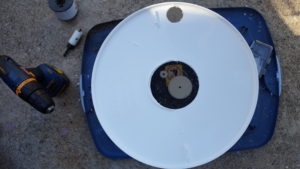 |
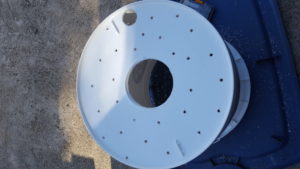 |
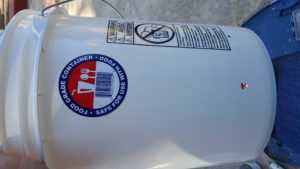 |
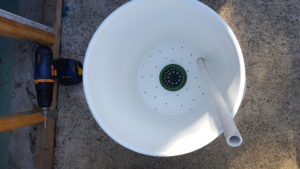 |
| Holes cut for the drain & pipe | Holes drilled for drainage | Weep hole drilled | Built container |
I built out the container. Then, I put a thin layer of lava rock gravel over the bottom of the upper growing chamber and a little in the inverted atrium drain that serves as the container’s wicking basket.
I poured regular organic potting soil into the upper growing chamber on top of the layer of gravel, but didn’t fill it all the way up. Then I added a little more gravel and then some more potting soil, and stirred them together with my hands so that the gravel was fairly evenly distributed throughout the soil.
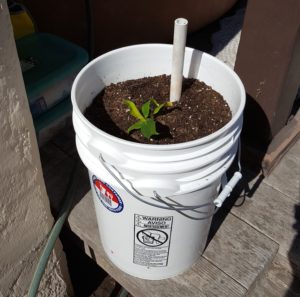
After that, I planted our little baby banana tree in the container, placed it on the deck, and filled the reservoir with water. I also moistened the top of the soil to help get the wicking action going so water will easily percolate up from the lower reservoir of water to keep supplying the roots of the plant with water.
Bananas are rumored to be very thirsty and require daily watering if in traditional patio containers. I’m curious to see what its water consumption will be in the self-watering container. The reservoir only holds about a gallon-and-a-half of water, so this little banana plant may still require daily watering.
Right now, this is totally an experiment. I have no idea how it’s going to turn out, but nothing ventured, nothing gained, and having a food source rich in potassium like bananas growing in a family or community garden is never a bad idea, if it can be done, so it’s worth it to figure out what can be done.
You can follow the progress of our little banana tree on our social media, along with the rest of the Learn & Grow test garden here in Southern California. We are working with others around the world and expect to have a Learn & Grow test garden in India before the end of this year, which will also be exciting to follow.
You can follow the progress of the plants in our So Cal test garden on Facebook, Twitter, Instagram, and/or Pinterest. Our biggest collection of gardening tips can be found on Pinterest, as well. Wish us luck with Operation Dwarf Banana! We hope to have a new food crop that we can teach other people to grow.

